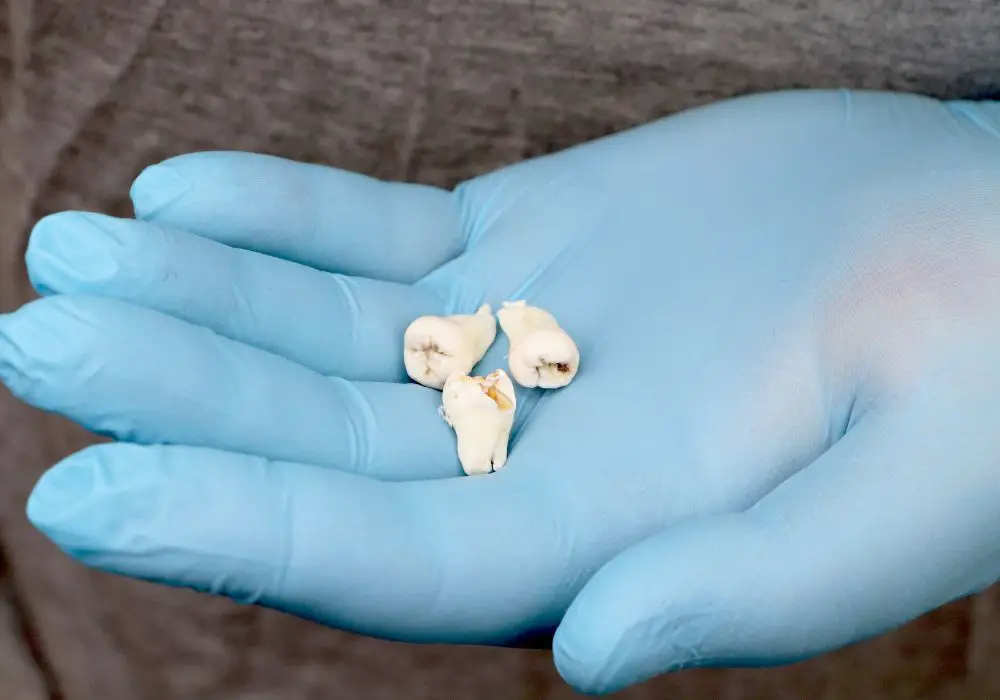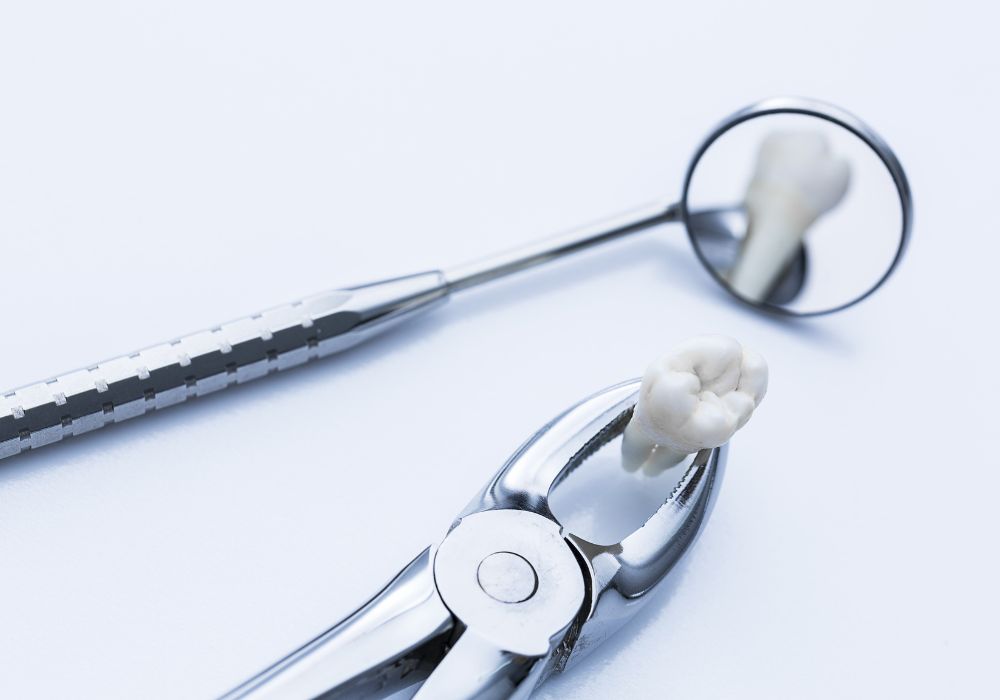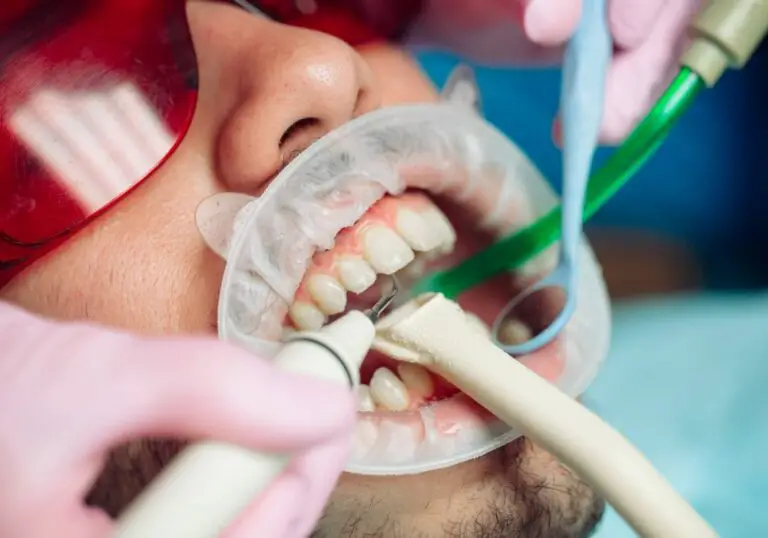If you’ve recently had your wisdom teeth removed, you may be wondering when you should stop using gauze. Gauze is used to help control bleeding and promote healing after the procedure. It’s important to follow your dentist’s instructions carefully to ensure a successful recovery.
Typically, you should keep gauze in place for at least 30 to 45 minutes after the procedure. This will help to stop any bleeding and allow a blood clot to form in the socket. After this time, you can start to remove the gauze for short periods of time. If you’re still experiencing bleeding, you can place a new piece of gauze directly on the incision site for another 30 minutes.
Understanding Wisdom Teeth Removal

Wisdom teeth removal is a common dental procedure that involves the removal of your third molars, also known as wisdom teeth. These teeth typically emerge in your late teens or early twenties, and in many cases, they can cause various oral health problems.
What is Wisdom Teeth Removal?
Wisdom teeth removal is a surgical procedure that involves the extraction of one or more wisdom teeth. The procedure is usually performed by a dentist or oral surgeon under local anesthesia, sedation anesthesia, or general anesthesia.
Why is it Done?
There are several reasons why you may need to have your wisdom teeth removed, including:
- Crowding: Wisdom teeth can cause overcrowding in the mouth, which can lead to misalignment of the teeth and bite problems.
- Impacted teeth: Sometimes, wisdom teeth do not fully emerge from the gums, which can cause pain, swelling, and infection.
- Decay: Wisdom teeth are more prone to decay than other teeth because they are located at the back of the mouth, making them difficult to clean.
- Gum disease: Wisdom teeth can also contribute to gum disease, which can lead to tooth loss and other oral health problems.
If your dentist or oral surgeon recommends wisdom teeth removal, it is important to follow their instructions carefully to ensure a successful recovery.
Remember to keep biting on the gauze for the initial 30-45 duration, and replace it with a new piece of gauze if the bleeding persists. Most people will need to use gauze for at least 24 hours after their wisdom teeth are removed. After that, you can start slowly removing the gauze for periods of 30 minutes at a time. If there is still bleeding or discharge present, continue using the gauze until it subsides.
Post-Surgery Care
After wisdom teeth extraction, it is essential to take care of yourself to ensure a smooth and speedy recovery. In this section, we will discuss the post-surgery care you need to follow, including the initial 24 hours and the first few days after the surgery.
Initial 24 Hours
During the initial 24 hours after wisdom teeth extraction, it is crucial to keep biting on the gauze to control bleeding. Replace the gauze with a new piece if the bleeding persists. It is best to get rid of the first gauze after 45 minutes.
To minimize swelling, apply an ice pack on the affected area for 20 minutes, followed by a 20-minute break. Repeat this process for the first 24 hours. Avoid rinsing your mouth, spitting, or using a straw, as this can dislodge the blood clot and delay healing.
It is also essential to avoid smoking, drinking alcohol, or taking hot drinks during the first 24 hours. These activities can increase the bleeding and delay the healing process.
First Few Days
After the first 24 hours, you can switch to using a soft diet and rinsing your mouth with salt water to promote healing. Avoid eating hard, crunchy, or spicy foods that can irritate the extraction site.
Continue to apply an ice pack on the affected area for the first few days to minimize swelling. You can also take over-the-counter pain relievers like ibuprofen or acetaminophen to alleviate pain and discomfort.
It is important to maintain good oral hygiene during the recovery period. Brush your teeth gently, avoiding the extraction site, and rinse your mouth with salt water after meals. Do not use mouthwash or toothpaste that contains alcohol, as this can irritate the extraction site.
In conclusion, following these post-surgery care instructions can help speed up your recovery and minimize the risk of complications. If you experience severe pain, bleeding, or swelling, contact your dentist immediately.
When to Stop Using Gauze

After having your wisdom teeth extracted, using gauze pads is crucial to control bleeding and promote healing. However, it’s important to know when to stop using gauze to avoid delaying the healing process and increasing the risk of complications.
Signs of Healing
The most important sign that your wound is healing is when the bleeding has stopped. If your wound is still actively bleeding, then it’s not ready to be left uncovered yet. Once the bleeding has stopped, remove the gauze and discard it.
Another sign that your wound is healing is when the edges of the wound are starting to come together. This indicates that the clot is forming, and the healing process is underway. If you notice any unusual swelling, pain, or discharge, contact your dentist immediately.
Risk of Dry Socket
Dry socket is a painful condition that can occur when the blood clot that forms after a tooth extraction is dislodged or dissolves before the wound has healed. When this happens, the bone and nerves in the socket are exposed, causing severe pain and increasing the risk of infection.
To reduce the risk of dry socket, it’s important to follow your dentist’s instructions carefully. Avoid smoking, using straws, or spitting for at least 24 hours after the extraction, as these activities can dislodge the blood clot. Also, be gentle when brushing your teeth and avoid touching the extraction site with your tongue or fingers.
In general, you should stop using gauze after about 45 minutes to an hour, or when the bleeding has stopped. However, if you experience any unusual symptoms or complications, contact your dentist immediately. They can provide further guidance on when to stop using gauze and how to promote healing after wisdom teeth extraction.
Alternatives to Gauze
If you are looking for alternatives to gauze after wisdom teeth extraction, there are a few options you can consider. Here are some of the most common alternatives to gauze:
Tea Bags
Tea bags can be used as an alternative to gauze after wisdom teeth extraction. Simply steep a tea bag in hot water for a few minutes, allow it to cool, and then place it over the extraction site. The tannic acid in the tea can help to reduce bleeding and swelling.
Sterile Cotton Balls
Sterile cotton balls can also be used as an alternative to gauze. Simply wet the cotton ball with water and place it over the extraction site. The cotton ball will absorb any blood or saliva and help to reduce bleeding.
Ice Packs
Ice packs can be used to reduce swelling and numb the area around the extraction site. Simply wrap an ice pack in a towel and place it on your cheek for 20 minutes at a time. Be sure to take breaks between applications to prevent frostbite.
Salt Water Rinse
A salt water rinse can help to reduce swelling and prevent infection after wisdom teeth extraction. Mix a teaspoon of salt with a cup of warm water and swish the mixture around in your mouth for 30 seconds before spitting it out.
Over-the-Counter Pain Relievers
Over-the-counter pain relievers like ibuprofen or acetaminophen can help to reduce pain and swelling after wisdom teeth extraction. Be sure to follow the instructions on the label and only take the recommended dose.
Remember, if you are unsure about which alternative to gauze is right for you, be sure to consult with your dentist or oral surgeon.
When to Seek Medical Attention

After wisdom teeth extraction, it is normal to experience some bleeding and discomfort. However, if you notice any unusual symptoms, it is important to seek medical attention immediately. Here are some signs that you should look out for:
Persistent Bleeding
It is normal to experience some bleeding after wisdom teeth extraction. However, if the bleeding persists for more than 24 hours, it could be a sign of a more serious problem. In such cases, you should contact your dentist or oral surgeon immediately.
Unusual Pain or Discomfort
It is common to experience some pain and discomfort after wisdom teeth extraction. However, if you experience any unusual pain or discomfort, it could be a sign of complications such as dry socket or infection. Some signs to look out for include:
- Severe pain that does not subside with pain medication
- Swelling that worsens over time
- High fever or chills
- Difficulty breathing or swallowing
If you experience any of these symptoms, you should contact your dentist or oral surgeon immediately. They will be able to assess your condition and provide appropriate treatment.
Remember, it is always better to err on the side of caution when it comes to your oral health. If you have any concerns or questions about your recovery after wisdom teeth extraction, do not hesitate to contact your dentist or oral surgeon.
Frequently Asked Questions
How do I know when to stop using gauze after tooth extraction?
You should stop using gauze after tooth extraction once the bleeding has stopped. This usually takes around 30-45 minutes, but it can vary depending on the individual. If the bleeding persists, you should continue to use gauze until it stops.
Do I keep gauze in overnight after tooth extraction?
No, you should not keep gauze in overnight after tooth extraction. It is recommended that you replace the gauze every 30-45 minutes until the bleeding stops. Once the bleeding has stopped, you can remove the gauze and discard it.
When can I drink water after wisdom teeth removal?
You can drink water after wisdom teeth removal as soon as you feel comfortable doing so. It is important to stay hydrated, but you should avoid using a straw for the first few days as the suction can dislodge the blood clot and cause dry socket.
What to do after wisdom teeth removal?
After wisdom teeth removal, it is important to rest and avoid strenuous activity for the first few days. You should also avoid smoking and drinking alcohol, as these can slow down the healing process. It is important to follow your dentist’s instructions for post-operative care and attend any follow-up appointments.
Heat or ice after tooth extraction?
You can use both heat and ice after tooth extraction to help manage pain and swelling. Ice should be used for the first 24-48 hours to reduce swelling, while heat can be used after that to help with pain and promote healing.
Ran out of gauze for wisdom teeth?
If you run out of gauze for wisdom teeth, you can use a clean, damp cloth or tea bag instead. Make sure to apply gentle pressure to the extraction site to help promote clotting and stop bleeding.






